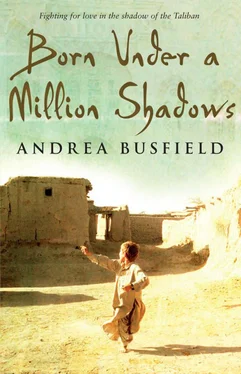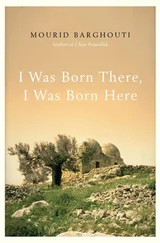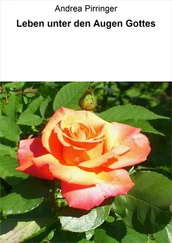Reprinted by permission of British Vogue .
I was well aware of the challenges I might face as a Western woman in an Islamic country precariously balanced between recovery and relapse. I always took care to respect the customs and I also learned the language. Most ordinary Afghans were not even remotely hostile to Westerners. When men stared at me in the street, it was out of curiosity, not malevolence. I was never made to feel unwelcome or vulnerable, which is why I declined the free accommodation offered behind the barbed-wire walls of the ISAF headquarters. I planned to spend at least two years in Afghanistan and sharing a metal container with another expatriate was not the way I planned to do it. So I hired a driver, employed a cook, and moved to a house on Lane 2, off Street 15, in Wazir Akbar Khan, a relatively plush suburb that was home to embassies, NGO compounds, and good restaurants.
I was well aware of the challenges I might face as a Western woman in an Islamic country precariously balanced between recovery and relapse.
By the time I moved in, spring had arrived and I was as happy as I’d ever been. I had a much-longed-for puppy, Blister; a two-story home opposite a Thai restaurant; a man to cook and “guard” the place; a decent job; and a mobile phone that buzzed with gossip and invitations. Kabul gave me a life I could never have dreamed of. Which is not to say that it didn’t have its difficulties.
In Kabul, electricity was a rare visitor that appeared for five hours a night every forty-eight hours—or every seventy-two hours when the rivers ran dry and the hydroelectricity dams shuddered to a halt. As a consequence, the capital hummed with the constant buzz of generators, which invariably broke down or ran out of fuel when you needed them most.
Being 5,900 feet above sea level, the winters were exceptionally harsh, hitting −20°C outside and −15°C inside. Pipes would freeze, water had to be drawn from a well, toilets were flushed manually using a bucket, and heating was a source of frustration and danger. One night, my diesel fire exploded, startling my dog and me, as well as the guards from the compound next door. They came running to help, suspecting some fiendish Taliban plot, only to find me in my pajamas, my face smeared with black soot, watching my crippled bukhari (stove) burn out.
Once the snow thawed and the sun came out, everyone followed it. In the center of town, Chicken Street would wriggle with Westerners bartering over Persian carpets, scarves, pakoul hats, and antique guns dating back to the Afghan-Anglo wars.
In the center of town, Chicken Street would wriggle with Westerners bartering over Persian carpets, scarves, pakoul hats, and antique guns dating back to the Afghan-Anglo wars.
On nonwork days, I would meet up with my best friends—Frauke, thirty-nine, a Dutch woman working for an NGO promoting textile and cashmere projects, and Rachel, thirty-five, a BBC producer. We would do lunch at Le Bistro before trawling the shops for new scarves, tunics, cosmetics, and toiletries, all the while followed by a small posse of children offering their services as bodyguards or bag carriers. But it was when the sun set and the call to prayer died on the breeze that the city turned magical. Shops decked with fairy lights and brightly colored bulbs gave evenings a festive air; smoking charcoal from kebab stalls waft ed along pathways; and, from Wazir Akbar Khan to Shahr-e Naw to Qala-e Fatullah, Land Cruisers clogged the streets, ferrying people to dinner invitations, restaurants, and bars.
At night, we would discard our headscarves, rearrange our cleavages, apply our lipstick, and head for favorite spots such as the restaurant-bars L’Atmosphère, Gandamack, and La Cantina. (Af ghanistan is, of course, an Islamic country but the alcohol ban only applies to Muslims. The only rule imposed on Western revelers was one of leaving firearms at the door.) Although spring signaled the start of renewed Taliban assaults—following the traditional hiatus in hostilities over winter—the main topics of conversation among the women I knew involved hairdressers, waxing, and men. Life was normal. Even in Kabul.
The only rule imposed on Western revelers was one of leaving firearms at the door.
A typical day began at seven o’clock, when I would be woken with coffee by my cook, Mohammad Sharif. He lived in a hut at the back of my house. He had asked me for a gun, thinking this would be an easy request given my military contacts, but the most dangerous weapon I allowed on the premises was the gas burner. In Wazir Akbar Khan, the streets crawled with heavily armed guards and I didn’t feel it necessary to add to the neighborhood’s arsenal.
At 7:45 a.m., I would jump into a Toyota Corolla expertly driven by my driver, Sharabdin, through nightmare traffic jams and sudden road closures, as politicians and dignitaries sprang from one fortified residence to another. If we happened to come across an ISAF patrol, we kept our distance. They were a target for suicide bombers and if they came under attack we might get caught in the crossfire.
By eight o’clock, I would be at ISAF headquarters, attending the “huddle”—a daily meeting to issue orders and recount hostile incidents. Following the huddle, work began on the newspaper, but, as the whole publication could be written in two days, time was usually spent debating lunch venues, going for coffee, and scheming up ways to leave the office early.
Occasionally, the UN and the larger NGOs imposed curfews on their staff following Afghan protests triggered by perceived injustices, or after attacks on Westerners. In May 2006, the Afghan government stamped a weeklong curfew on the city after riots broke out following a fatal collision in the north of Kabul involving a U.S. military truck. At the time, rather than being fearful, much of the expatriate community was only irritated by the 10 p.m. lockdown. Most restrictions were short-lived, however, and, within days, L’Atmosphère’s swimming pool would again be decorated by women in bikinis.
This wasn’t bravado; Kabul veterans honestly believed they had little to fear from insurgents. Although tragedies such as a shooting of a female South African Christian aid worker in the west of the city were not unheard of, they were nevertheless rare events, and quite random. Everyone in Kabul accepted that there was a risk, but most crimes committed against the expatriate community were opportunist, not planned, and therefore the general feeling was one of “wrong place, wrong time.” No matter what happened—or to whom—our work continued and the parties never stopped.
I adored Afghanistan. I enjoyed the frantic pace of the city, the enormity of the circling mountains, and the camaraderie I found there.
I adored Afghanistan. I enjoyed the frantic pace of the city, the enormity of the circling mountains, and the camaraderie I found there. And in the autumn of 2006, something happened for which I was totally unprepared: I fell in love.
Lorenz was a captain in the Austrian army, and he was deployed to the hearts-and-minds section of the ISAF machine. Although I recognized that he was good-looking, he was a soldier and therefore of little interest to me. He was also six foot three with blond hair and blue eyes: not my type. Then one Thursday night, I pitched up at L’Atmosphère and found him drinking beer in civilian clothes. I decided to make him my boyfriend.
For the first time in Afghanistan, I lived my life not as a single woman—dodging curious questions from my Afghan friends about when I planned to marry and have children—but as part of a couple. Despite the threat of an instant disciplinary action—and probable dismissal—Lorenz snuck out of the ISAF camp every night. At 5 a.m., the alarm would sound in my bedroom and he’d pull on his jeans, sit on the bed, snap his gun into its holster, and pull on his T-shirt. Although Mohammad Sharif was initially aghast at having a man staying overnight, he soon grew fond of Lorenz—no doubt because he possessed his own gun.
Читать дальше












